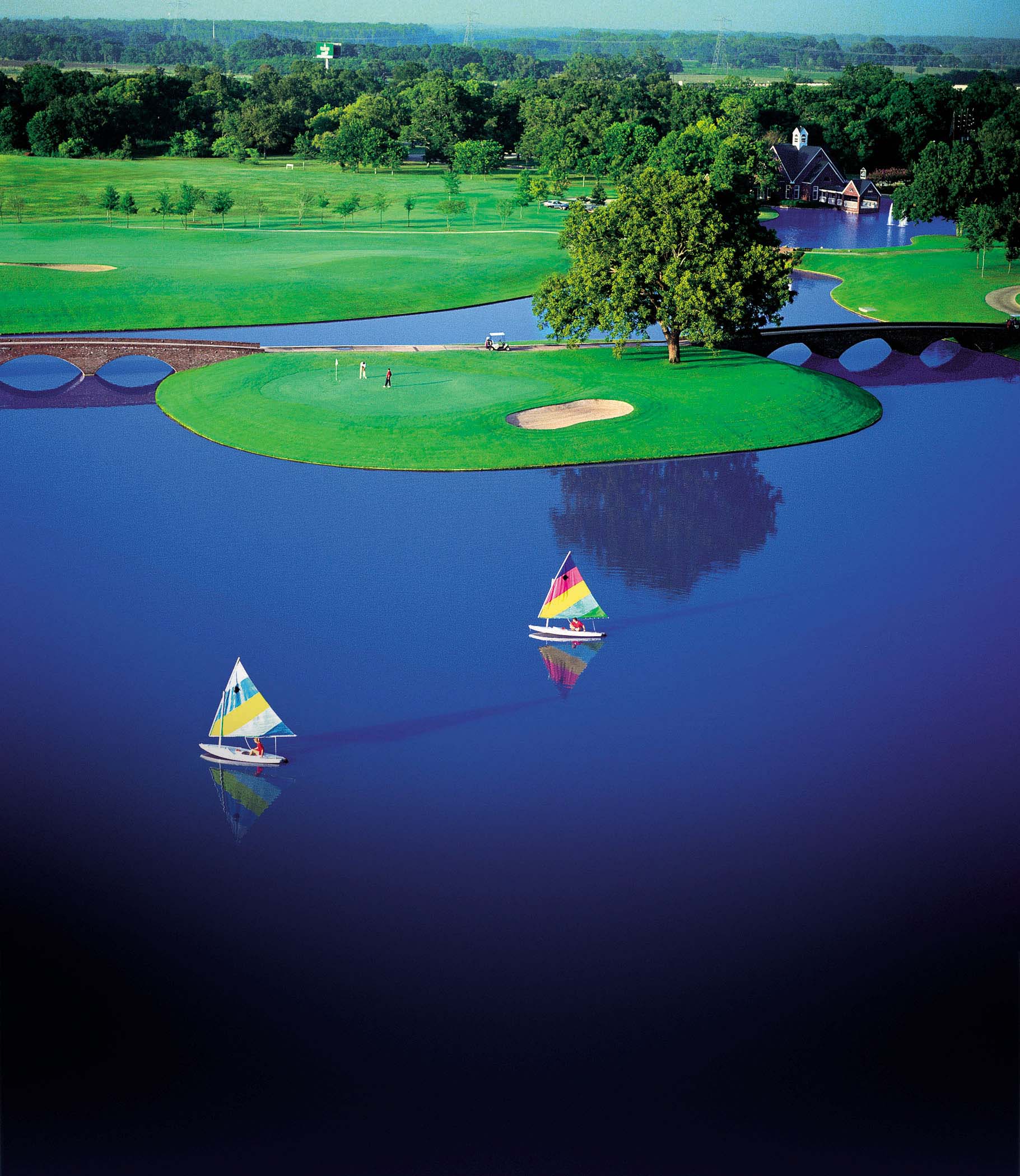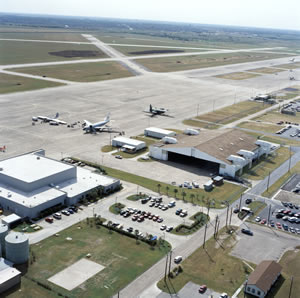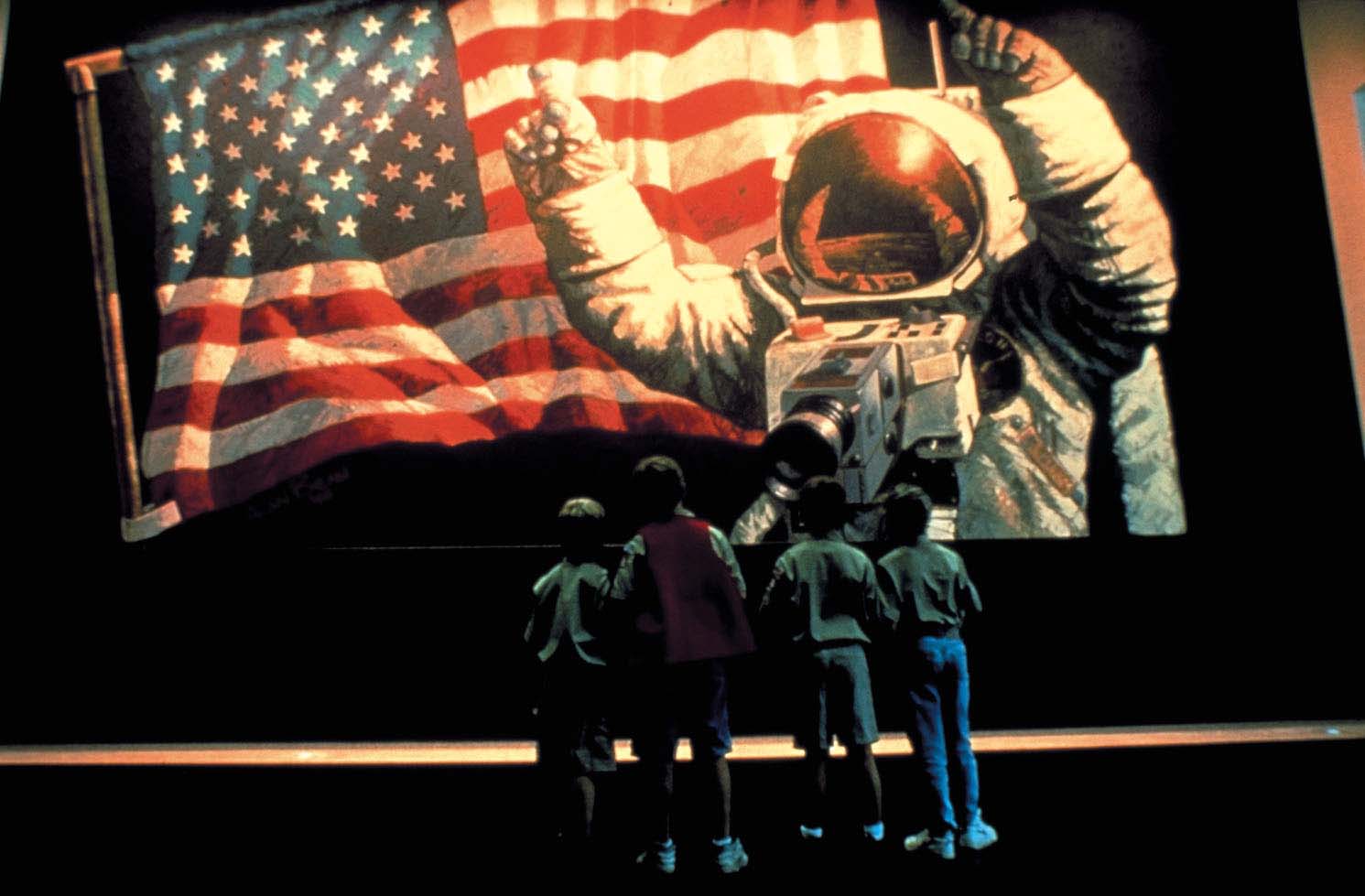By Jill Michaels
In the black ocean of outer space, Houston is a bright beacon on the horizon. From an Earth-bound perspective, Houston is a vibrant spot on the shores of Galveston Bay, along the Gulf of Mexico.
 Bay Area Houston is sprinkled along 15 miles of Galveston Bay and 20 miles of Clear Lake, a 2,000-acre inlet of the bay. The area is located off Interstate 45 midway between downtown Houston and the Galveston beaches, with a drive of 30 minutes to either. Clear Lake, the boating capital of Texas, is the third-largest basin for pleasure boats in the U.S. Depending on your occupation and level of training, you have the option of sailing in a boat, in an aircraft, or in the Space Shuttle or International Space Station. Bay Area Houston is sprinkled along 15 miles of Galveston Bay and 20 miles of Clear Lake, a 2,000-acre inlet of the bay. The area is located off Interstate 45 midway between downtown Houston and the Galveston beaches, with a drive of 30 minutes to either. Clear Lake, the boating capital of Texas, is the third-largest basin for pleasure boats in the U.S. Depending on your occupation and level of training, you have the option of sailing in a boat, in an aircraft, or in the Space Shuttle or International Space Station.
The area’s first residents were the Karankawa Indians along the Gulf coastline. Houston was founded in 1836 by two real estate promoters, brothers named Augustus C. and John K. Allen. They named the city in honor of Sam Houston, the general who led the U.S. army to win Texas’ independence from Mexico that year. The following year Houston—the city, not the man—began serving as the capital of the Republic of Texas, before Austin took over that role in 1840. In the late 1800’s, Buffalo Bayou was widened and deepened to create the Houston Ship Channel, linking the city with the Gulf. Since that time, Houston has grown to currently rank itself as the fourth-largest U.S. city, the nation’s leading oil-refining center, and one of the world’s major seaports.
Annual public events nurture the traditionally keen sense of Texan pride. The Houston Livestock Show and Rodeo in late February or early March is the largest event of its kind in the U.S. Several name-brand singers perform throughout the show’s three-week run. Every August over 100 hot air balloons are launched at the Ballunar Liftoff Festival. The Wings Over Houston Airshow in October is billed as one of the top four airshows in the nation.
Houston’s relationship with outer space is legendary. In the fall of 1961, in the heat of the Space Race, NASA announced that a new Manned Spacecraft Center would be established on a 1,000-acre tract of land on the edge of Clear Lake, transferred from Rice University. Since 1964, Mission Control—called “Houston” for short—has directed the nation’s human space flights after their launch from eastern Florida. The renamed Manned Spacecraft Center, the Lyndon B. Johnson Space Center (JSC) serves as the training headquarters for the U.S. astronaut corps.
Ellington Field
VFR flight conditions in the Houston area average over 330 days a year. Ellington Field (EFD, Tower 126.05), the closest airport to the Clear Lake area, is a few minutes’ drive northwest of JSC. The sole FBO on the field is Southwest Airport Services (800-426-5237, 281-484-6551).
This airport, established during World War I, was named for Lt. Eric L. Ellington, who died in a 1913 plane crash in San Diego. EFD was one of the largest U.S. military aviation training facilities during the world wars. Later it was used as an Air Force Base for nearly 29 years. It still receives Air Force One whenever the president flies into town.
Twenty years ago, the City of Houston’s Department of Aviation took over the field. These days GA mingles with brown United Parcel Service aircraft and a remnant of military aviation traffic. NASA’s Aircraft Operations Division operates the G-II, the WB-57F, the DC-9, the KC-135A (a.k.a. the Vomit Comet), the Super Guppy (one of my personal favorites) and the T-38N, the astronauts’ spaceflight readiness training tool. Not surprisingly, many astronauts hold private pilot tickets. Their birds also nest at EFD.
SpaceCity’s Right Stuff
 NASA’s influence is felt all over Bay Area Houston. To add a unique slant to this article, I decided to draw upon my four-year media relationship with NASA. JSC accommodated me with a fine grab bag of four astronauts who volunteered to share their comments about flying in the vicinity. I spoke on the phone with Dr. Ed Lu and USAF Col. Scott “Doc” Horowitz the day after Burt Rutan’s SpaceShipOne soared from Mojave on history’s first privately funded manned spaceflight. (Lu, an eyewitness of that occasion, remarked: “This could be the start of something big.”) I chatted with former Air Force Officer Mark “Roman” Polansky the following day. Frank Caldeiro and I talked on the 35th anniversary of the Apollo 11 landing a month later. NASA’s influence is felt all over Bay Area Houston. To add a unique slant to this article, I decided to draw upon my four-year media relationship with NASA. JSC accommodated me with a fine grab bag of four astronauts who volunteered to share their comments about flying in the vicinity. I spoke on the phone with Dr. Ed Lu and USAF Col. Scott “Doc” Horowitz the day after Burt Rutan’s SpaceShipOne soared from Mojave on history’s first privately funded manned spaceflight. (Lu, an eyewitness of that occasion, remarked: “This could be the start of something big.”) I chatted with former Air Force Officer Mark “Roman” Polansky the following day. Frank Caldeiro and I talked on the 35th anniversary of the Apollo 11 landing a month later.
 Lu owns an RV-4 with an IO-360 engine that does 170 knots. One suspects that he continued his personal hobby of aerobatics while he flew for six months on the International Space Station (ISS) last year during Expedition 7. Horowitz built and flies a Tri-Q-200 with a top speed of 150 knots. He is a Shuttle commander with four spaceflights on his C.V.—including STS-101, which I saw launched at sunrise from my vantage point on the roof of the Vehicle Assembly Building at the Kennedy Space Center (KSC). Polansky drives a 1967 Mooney, E-model. He served as Shuttle pilot for STS-98, which I also saw launched one soft February twilight shortly after sunset. Caldeiro, who was born in Argentina, built and flies his Rutan-designed Long-EZ. He worked at KSC before he was selected for the same astronaut class as Polansky. In coincidental affirmation of astronaut fraternity, the Mooney was the hangar buddy for the Long-EZ before moving into its current residence with the RV-4. Lu owns an RV-4 with an IO-360 engine that does 170 knots. One suspects that he continued his personal hobby of aerobatics while he flew for six months on the International Space Station (ISS) last year during Expedition 7. Horowitz built and flies a Tri-Q-200 with a top speed of 150 knots. He is a Shuttle commander with four spaceflights on his C.V.—including STS-101, which I saw launched at sunrise from my vantage point on the roof of the Vehicle Assembly Building at the Kennedy Space Center (KSC). Polansky drives a 1967 Mooney, E-model. He served as Shuttle pilot for STS-98, which I also saw launched one soft February twilight shortly after sunset. Caldeiro, who was born in Argentina, built and flies his Rutan-designed Long-EZ. He worked at KSC before he was selected for the same astronaut class as Polansky. In coincidental affirmation of astronaut fraternity, the Mooney was the hangar buddy for the Long-EZ before moving into its current residence with the RV-4.
Cruising Around
the Bay by Day
Nearly all astronauts’ out-of-town guests stop by JSC’s visitors center, Space Center Houston (1601 NASA Parkway, 281-244-2100, spacecenter.org). I’ve visited it twice, both times during Shuttle missions. I liked exploring the cramped quarters of the life-sized replica of the Space Shuttle’s orbiter. Walking through a vault that displays Moon rocks from the Apollo era was another highlight. I received mixed reviews at my attempts at landing the orbiter on one of the Shuttle landing simulators. (Hint: drive the vehicle like a black-and-white brick.) Watch a space film in the giant-screen theater, and make sure to take the NASA tram tour that drives by several buildings on JSC property. One of the visitors center’s exhibits this fall will be Gus Grissom’s Mercury capsule, Liberty Bell 7. It was lost at sea after splashdown in 1961 but recovered in 1999.
New this year at Space Center Houston is the “Level 9 Tour,” an exclusive look behind the scenes at JSC. Only 12 guests are allowed per day to visit buildings that became off-limits to the trams after 9/11. The ironic result is a more intimate tour of JSC. On this four-hour tour you’ll visit the new and old Mission Control buildings, the vacuum chamber, the space vehicle mock-up facility, and other buildings of interest. Lunch in the JSC Astronaut Cafeteria is even included. Two tour guides are available one-on-one for questions. If you take this tour, keep three things in mind. First, book well in advance. Second, children under 16 are excluded due to NASA security restrictions. Third, the tour price includes two days admission to Space Center Houston. Reservations may be made online, but be mindful of the cancellation policy.
For a breezy half-day expedition, set your charts for the Kemah Boardwalk (kemahboardwalk.com). Ride the Ferris wheel, carousel or train, or browse the specialty shops. Caldeiro lives 1 1/2 miles from the boardwalk; it is one of his spots to take his visiting guests. In his words: “You can go to Kemah and pick what you want to see or do.”
Fresh Gulf seafood is dished out at many eateries on the boardwalk and around Clear Lake. As a heads-up, some restaurants and hotels will accommodate your arrival by water. Boat charters are available from marinas surrounding the lake. For those less nautically inclined, check out the boat tours of the lake, bay and Houston Ship Channel.
The lakefront Italian restaurant Villa Capri in Seabrook (281-326-2373, villacaprionclearlake.com) has a unique celestial legacy. Last summer it hosted the reception for the first space wedding. Lu’s cosmonaut commander on Expedition 7, Yuri Malenchenko, exchanged wedding vows with Ekaterina Dmitriev via radio while the crew orbited over 200 miles above Earth. Lu as best man played “The Wedding March” on the space station’s musical keyboard while the bride walked solo down the aisle at JSC. During the reception, life-sized cardboard cutouts represented the absent spacemen. (Texas law allows for proxy weddings.) Villa Capri’s exquisite balance of Gulf seafood with old-world Italian cooking is the perfect touch to open-air dining or sunset watching over the water.
Polansky points out the logistics of ground transportation. “In Houston, you need a car to get around. It’s not like New York or Washington where you can take the subway or Metro. Houston is more like Los Angeles or Las Vegas.” The Clear Lake area is roughly 25 miles from downtown Houston and the theater district, the symphony and the ballet.
Battening Down the Hatches for the Night
Hotels are as plentiful and colorful as the boats on Clear Lake. Visiting NASA folks traditionally stay in the Hilton across the street from JSC (Hilton Houston NASA Clear Lake, 281-333-9300). Two bonuses of this hotel are complimentary local transportation and its own marina. League City boasts the luxurious South Shore Harbour resort area. Bed-and-breakfasts beckon from the bayfront communities of Kemah and Seabrook. I noted with some amusement that someone even runs a boat-and-breakfast in Kemah. To locate your own lodging treasure, contact the Bay Area Houston Convention and Visitors Bureau (800-844-LAKE, visitbayareahouston.com) or the City of Webster (877-WBSTRTX, cityofwebster.com) to request information packets including discounts. Be aware that NASA Road 1 was recently renamed NASA Parkway but that some maps and address listings have not yet been updated.
 On my last visit to Houston, during Polansky’s spaceflight STS-98, I set up camp for over a week in an extended-stay apartment hotel somewhere along NASA Rd. 1/Parkway or Bay Area Blvd. The only distinct part I remember is that I paid a bargain $25 per night. The nicer hotels carry NASA Television (nasa.gov/multimedia/nasatv/index.html) as part of their cable lineup. This nifty feature came in handy as I followed the astronaut crewmembers’ activities as they installed the science laboratory Destiny to the ISS during their flight. On my last visit to Houston, during Polansky’s spaceflight STS-98, I set up camp for over a week in an extended-stay apartment hotel somewhere along NASA Rd. 1/Parkway or Bay Area Blvd. The only distinct part I remember is that I paid a bargain $25 per night. The nicer hotels carry NASA Television (nasa.gov/multimedia/nasatv/index.html) as part of their cable lineup. This nifty feature came in handy as I followed the astronaut crewmembers’ activities as they installed the science laboratory Destiny to the ISS during their flight.
Ellington’s Annual
Fall Migration
If you plan a visit to Bay Area Houston this year, you may wish to coincide its timing with the Wings Over Houston Airshow 16 and 17 October at EFD. The USAF Thunderbirds will perform, and a B-2 stealth bomber will make a fly-by. Well-known aerobatics stunt pilot Jimmy Franklin will appear in a jet-powered Waco. I caught his high-octane performance several years ago in Phoenix, and I highly recommend it. He gives a new twist to the phrase “vertical takeoff.” If you order advance tickets before 5 October, ask for special rate SWA and receive $5.00 off general admission adult tickets, $1.00 off kids tickets, and 10% off premium tickets (713-266-4492, wingsoverhouston.com). Check the Web site in advance of your trip for details regarding the times that EFD will be closed for arrivals and departures during the airshow weekend.
Puddle Jumping From EFD
Ellington Field is a prime launch pad for day trips along the Gulf Coast. What VFR routes do some astronauts like to fly?
Lu replies: “South from Ellington over JSC. You can see the Saturn V rocket lying outside. There is an aerobatics practice box north of Texas City. I go flying after work or on the weekend and do half an hour or an hour of aerobatics. Then I can pack up and be home in an hour. I enjoy the flying spirit and the desire to go fly. That certainly can be found within the Astronaut Office. But you can also see that go-out-and-fly adventurous spirit in the country.” Lu’s other destinations include David Wayne Hooks Memorial Airport (DWH, Unicom 122.95), Austin-Bergstrom International Airport (AUS, Unicom 122.95) and the 1 hour, 45 flight to New Orleans.
Horowitz comments: “I’ve been flying since I was six with my dad. My daughter has been flying with me since she was four. Her favorite thing to do is see if she can make Daddy sick. We fly from Ellington to LBX, Brazoria County Airport [Unicom 123.0]. She loves to fly there and eat at the restaurant [The Windsock Grill, 979-849-1221]. She is now eight years old and likes a good $50 cheeseburger in paradise.” Another Horowitz pit stop might be Scholes International Airport at Galveston (GLS, Unicom 123.05), with its approach near Galveston Island’s “amusements and pyramid-looking things” [Moody Gardens, its aquarium and the Rainforest and Discovery Pyramids (800-582-4673, moodygardens.com)].
Polansky reports: “My wife is from San Antonio [SAT, Unicom 122.95]. We go there to visit her family. It’s a 3 1/2 hour drive by car from Houston. When I fly, I look down and laugh at all the Friday traffic going west out of Houston. It’s only a 1 hour, 10 or 15 flight, if VFR. I get a little bit of flying in, plus we have to go there anyway.” He enthuses: “I love to fly small aircraft. I love the joy and the freedom of flying VFR. I’ve been flying jets for 25 years as my job. When I have to fly IFR, I hate it. I do that for work. Real flying is staring at a map. That’s the romance of it.”
Caldeiro reveals his favorite route: “Houston to Galveston along the coast to Corpus [Corpus Christi (CRP, Unicom 122.95)]. That’s Standard Tour Number One.” As with Horowitz’ daughter, Caldeiro’s seven-year-old daughter also likes to eat at the restaurant at LBX. “The only drawback is that the restaurant opens late, 11 a.m. on Saturday.” Another one of Caldeiro’s in-and-outs is the unattended Mustang Beach Airport (2R8, cityofportaransas.org/airport.html). He emphasizes: “The Long-EZ is fun and relaxing. It beats the T-38 hands down.”
In true astronaut form, Horowitz summarizes in few words the Clear Lake aviation life-style in Bay Area Houston: “It doesn’t matter if you’re flying Mach 25 or Mach .25. Flying is good!
|